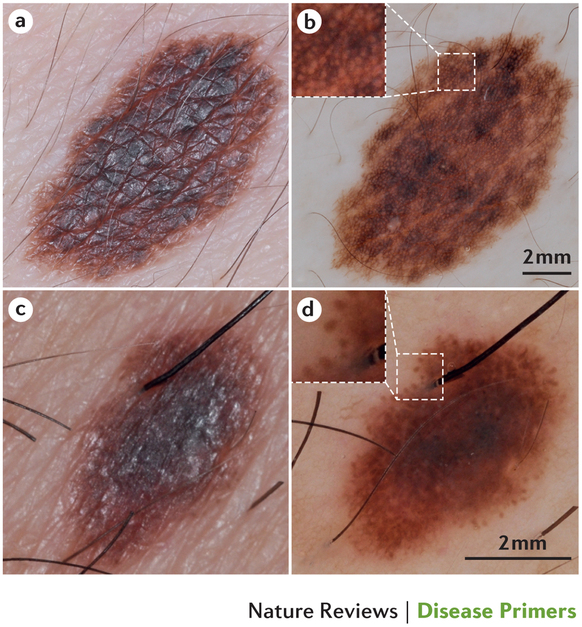悪性黒色腫
Melanoma
2015年4月23日 Nature Reviews Disease Primers Article number: 15003 (2015) doi: 10.1038/nrdp.2015.3

悪性黒色腫は欧米ではよく見られるがんであり、その発症率は増加している。日光曝露は、依然として悪性黒色腫の主要なリスク因子と考えられている。悪性の高い(進行期)悪性黒色腫の患者の予後は国によって大きく異なるが、早期発見を推奨する社会運動によって死亡率は有意に低下してきている。日光曝露以外にも、特有の遺伝子変化が悪性黒色腫に関連することが同定されている。例えば、悪性黒色腫の家系では生殖細胞のCDKN2Aに変異があることがよく知られているが、圧倒的大多数を占める散発性悪性黒色腫では、悪性黒色腫の発がん性と治療に最も深く関連している経路であるMAPキナーゼカスケードに変異が認められる。このカスケードは、悪性黒色腫における発がん性と治療法に最も深く関連する。BRAFおよびNRASの変異は皮膚悪性黒色腫に典型的に認めるが、KIT変異のほとんどは、粘膜悪性黒色腫と末端型悪性黒色腫に見られる。GNAQおよびGNA11の変異はぶどう膜悪性黒色腫によく見られる。さらに、PI3K–AKT–PTEN経路ならびに免疫チェックポイント経路も重要である。プログラム細胞死タンパク質1リガンド1(PDL1)およびPDL2が、悪性黒色腫細胞、T細胞、B細胞およびナチュラルキラー細胞に発現していることが示され、このことを契機として、プログラム細胞死タンパク質1(PD1)特異的抗体(ニボルマブ、ペムブロリズマブなど)が最近開発された。これらの薬剤は、BRAF阻害薬(ベムラフェニブとダブラフェニブ)およびMEK阻害薬(トラメチニブとコビメチニブ)などの新薬と同様に、非常に有望で、進行期の転移性悪性黒色腫患者の予後を有意に改善することが示されている。これらの新しい治療法が長期の臨床的有益性と患者のQOL(生活の質)を改善するという兆しが早くも見えている。このPrimerでは、悪性黒色腫に関する発症機序から臨床経過に至るまでの最新の知見を要約する。

